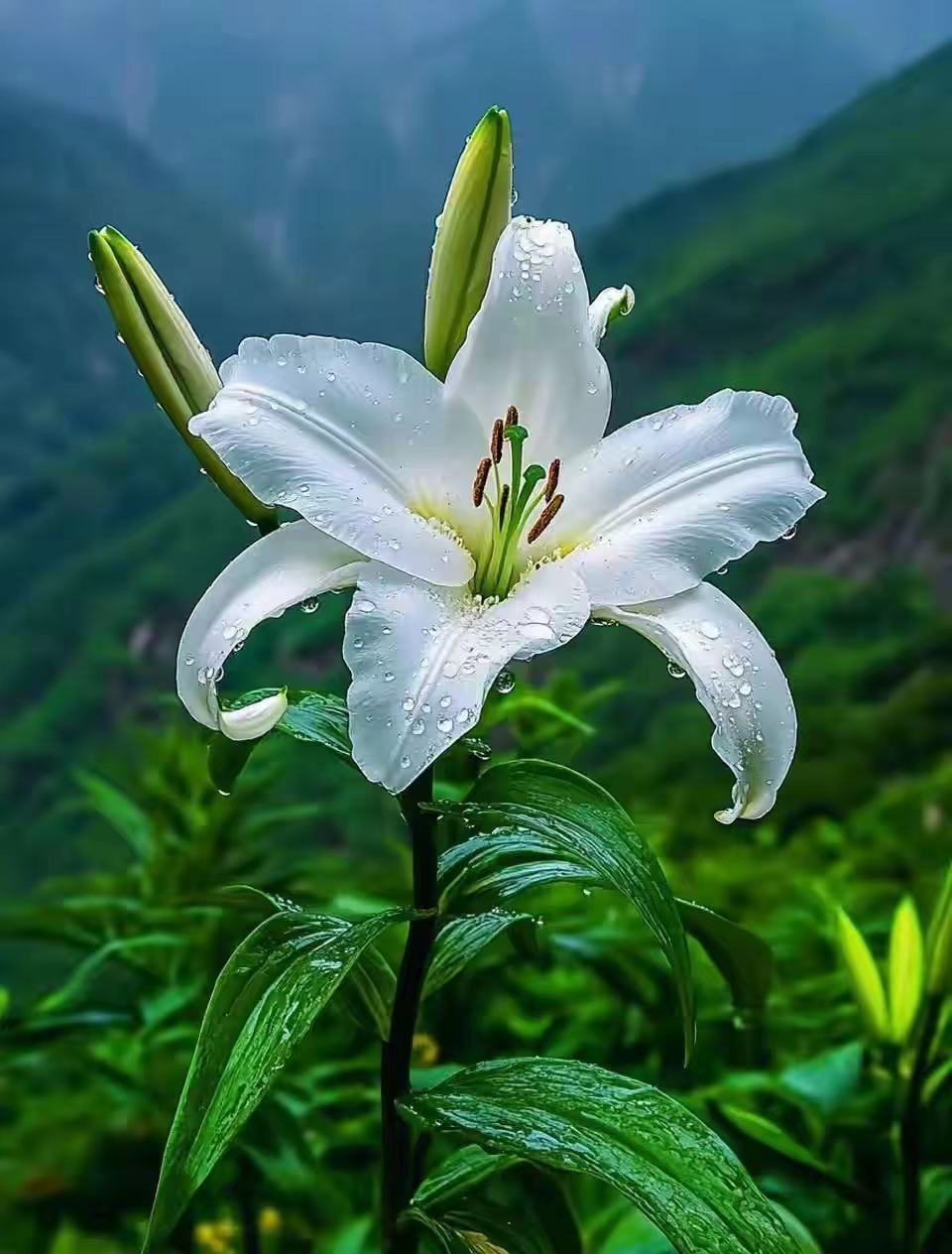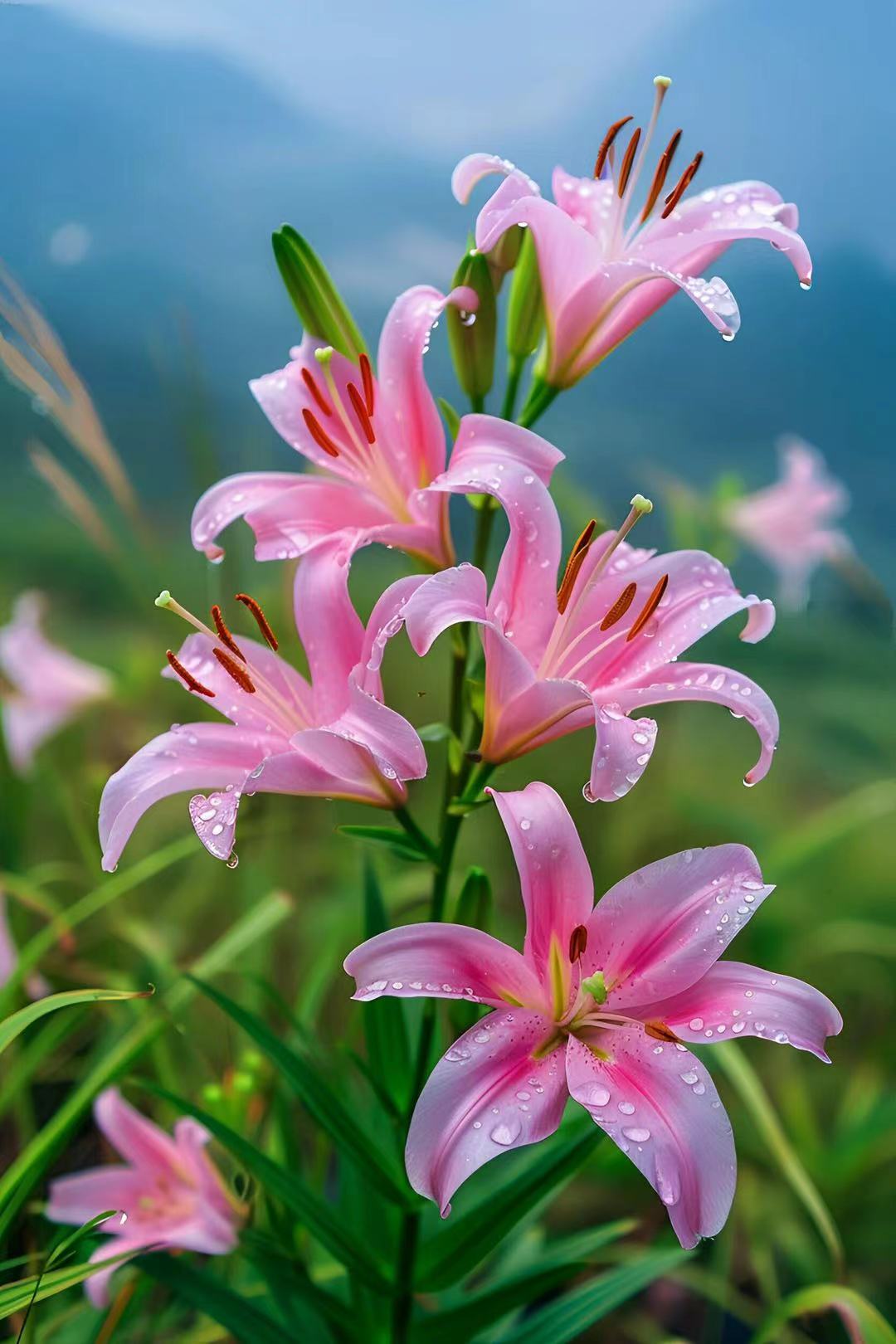Lilies, members of the genus *Lilium* within the Liliaceae family, stand as one of the most elegant and culturally significant flowers across the globe. These perennial plants have captivated human imagination for centuries with their delicate beauty and diverse symbolism.
Botanical Characteristics:
Lilies exhibit a distinctive botanical structure. They possess bulbs, underground storage organs composed of fleshy scales, which allow them to survive adverse conditions and regenerate each growing season. From these bulbs emerge upright, unbranched stems that can reach heights ranging from a few inches to several feet, depending on the species.
The leaves of lilies are typically lance - shaped, arranged alternately along the stem. Their margins may be smooth or slightly wavy, and they often have a glossy or matte texture. The flowers, however, are the centerpiece of fascination. Lilies produce large, showy blooms with six tepals (petal - like structures, where sepals and petals are indistinguishable). These tepals can be trumpet - shaped, bowl - shaped, or recurved, showcasing a stunning palette of colors—pure white, soft pink, vibrant yellow, and even speckled or bi - colored varieties. At the core of each flower lies the reproductive structure: six stamens with prominent anthers that release pollen, surrounding a central pistil that leads to the ovary, where seeds develop.
Cultural Significance:
Culturally, lilies carry profound meanings. In Christianity, the white lily is a sacred symbol associated with the Virgin Mary, representing purity, innocence, and motherhood. It often adorns religious art and ceremonies, embodying spiritual grace. In ancient Greek mythology, lilies were linked to Hera, the queen of the gods. Legend has it that when milk spilled from her breast, lilies sprang forth, making them a symbol of fertility and divine nourishment.
Across Asian cultures, particularly in China and Japan, lilies are esteemed for their association with good fortune, longevity, and a happy marriage. Their sweet fragrance and elegant form make them popular in traditional festivals, weddings, and imperial ceremonies. In modern times, lilies transcend cultural boundaries as a universal expression of sympathy in funerals, their serene beauty offering comfort in times of loss, while also symbolizing new beginnings in celebrations like weddings.
Cultivation and Uses:
Lilies are cultivated worldwide for both ornamental and practical purposes. Ornamentally, they are prized in gardens, floral displays, and cut - flower arrangements. To thrive, they require well - drained soil, moderate sunlight (though some species prefer partial shade), and proper spacing to prevent overcrowding.
Beyond aesthetics, certain lily species have medicinal uses in traditional herbal practices. For example, extracts from some lilies have been explored for their potential anti - inflammatory and soothing properties, though modern medicine approaches these applications with caution due to potential toxicity concerns. Additionally, lily bulbs of specific edible varieties, like *Lilium brownii*, are consumed in some Asian cuisines, often after thorough cooking to neutralize compounds that can cause digestive discomfort.
In conclusion, lilies are a botanical treasure. Their exquisite form, rich cultural narratives, and diverse applications—from adorning sacred spaces to enhancing culinary traditions—solidify their status as a flower that continues to enchant and inspire across time and cultures.



